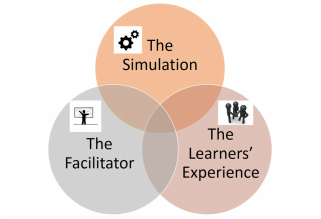"My greatest strength as a consultant is to be ignorant and ask a few questions." Peter Drucker  BOSS: "I want you to train the engineers on R38-X hydraulics safety at next week's meeting." YOU: "Gulp! Hydraulics safety? Uh-oh." Often, trainers are asked to train in topics outside their expertise. For example:
All of these are examples of when trainers train on unfamiliar topics. When this happens to me, I rely on a few analysis techniques. These techniques serve me well, and they've resulted in meaningful, useful, and performance-based training. Here they are: Simple Techniques -- Powerful Impact
Subject Matter Interviews -- "I bring process, you bring expertise." Since you don't have the expertise, you have to get it. A straightforward way to get it is to ask someone who knows. This person is your Subject Matter Expert, or SME. You may find this daunting, but people with jobs expertise usually are happy to share it. When you tell them that you're not there to judge but to learn, and are sincerely interested, they'll deliver the goods. Here are some tips:
Prioritize Your Content -- "Saying, 'It's all important' is not helpful." After you've done your homework and interviewed the experts, prioritization is in order. You are trying to answer the question: What learning requires more time, unique training methods, or specialized materials for learning and performance? To do this, review all the the content topics you gathered from your SME interviews, documentation, and other sources. Make a list of tasks/topics that the learners must learn. Wall charts are great for this. Then, assess each task or topic from the point of view of the learner population. Rate each task/topic High, Medium, or Low. You should consider:
I often will apply a formula to these assessments, where Prior Knowledge counts three times more than the other three criteria. I REALLY don't want to cover content people already know. It's very annoying to them and wastes their time. A Gram of Analysis is Worth a Kilogram of Cure (Thanks Joe Harless!) These techniques are a bit of work, to be sure. I have found that the value far outweighs the effort. I see these benefits from this approach:
Thanks to these techniques, I can confidently train a group of engineers on almost anything, including R38-X hydraulics safety. They love it, and they'll ask for more!
2 Comments
"The purpose of training is to make learning possible." Klas Mellander  "Wait, what? This simulation isn't computerized? How can it be any good?" I've recently heard a learning program sponsor make this claim. He seemed to be convinced that only a computer based, digitized simulation experience would be of any value. He wanted the best for his employees of course, so he wanted the latest technology to deliver it. He's right to want low cost, high impact in-person training and development. We all want that. However, in order to make the most of in-person learning events, we ought to focus on approaches that work. Well-designed simulations work exceptionally well. Either digitized or not. Digitization has taken over a lot of executive thinking these days. Companies are looking for the best ways to save cost, innovate, manage complexity, and drive sales. Big data, enterprise systems, mobile technology, The Cloud . . . so if you want to do learning with a leading edge attitude, these technologies are better, right? We've known for some time that the delivery method of learning has marginal impact on learning effectiveness. Studies have shown that we learn about the same regardless if its in person, over a computer, or through any other channel. Yes, it's true. So, what's my point? My point is that it is the design of the learning experience that makes the difference. What often happens with digitized simulations is that the inter-connections and the cause-effect of the learning experience are hidden inside. They are not visible. And it's this visibility that is so important for learning. Too often, learners only can see the results of their decisions, but they cannot trace the why. Not all digitized simulation experiences are this way. Too many are. It's important to recognize when the digital tool is getting in the way of learning. By contrast, consider a "table top" simulation. These exercises are played out literally on a top of a table. The technology, if you could call it that, is made up of pictures, diagrams, metaphor, cards, chips, and other types of markers and game pieces. Teams in the session (in person, together!) work through the decisions, planning, and analysis needed to take on the challenge. Perhaps it's chess-type (strategic) or a simple case study. In either case, since the simulation and all of its elements are graphically represented on the table top, the learners can more clearly see the all-important cause and effect of their decisions. Need an example? Look here. Learners also are required to take notes -- many times with a pen and paper. Noting things with pen and paper have been shown to increase recall and to aid in learning. Should there be no computers at all? Of course not. Computers and digitization offers tremendous power and opportunity in the learning environment. We have access to so many tools and capabilities that are low cost and high impact. However, remember that learners learned because of the experience, not because of the technology. A great learning simulation provides the learner engagement, new (and confirming old) information, processing, relationships, and relevant application. Learners focus their attention, they solve relevant problems, and they put things together into meaningful wholes. It's the "a-ha" feeling that is memorable and remarkable. What works? Well, consider Klas Mellander's learning participant's plea, from The Power of Learning: 1. Don’t stifle my natural curiosity, awaken it! 2. Just give me the information I need, not a bunch of information I don’t need. 3. Let me think things through myself and draw my own conclusions. 4. Help me find words for the things I’ve understood. 5. Help me use my knowledge, so it doesn’t wither away and become useless. What do you think? Do you agree that digitized solutions for learning are just better? Why? Reply in the comments below. "Retention is best when the learner is involved." - Edward Scannell, University Conference Bureau, Arizona We Prefer Learning This Way Because it Works Here's a thought experiment I sometimes use in my seminars. I like thought experiments. No one gets hurt, but the learning can be just as effective. Imagine that you have to catch a flight to a great destination. You're looking forward to going. You are at the airport, through security, and walking up to your gate. You notice something unusual. You have TWO identical gates, not just one, to take you to your destination. They are Gate A1 and Gate A2. The gate agent announces that you may choose either flight to get to your destination. You also notice that both gates have brand new airplanes -- the ones you've read about. The two flights at the two gates are identical in every way, but one: Crew Training. Gate A1 has a crew trained via flight simulators, hands on practice, and in-depth coaching. Gate A2 has a crew trained via lecture and PowerPoint slides. Which gate do you choose? Of course, most people choose A1, the gate with the learner-centered, performance-based techniques used to train the crew. Why? Because among other things, our lives depend upon it. Shouldn't it be the same for ALL of our most valuable assets in business -- our people? Don't they deserve the same quality of instruction? In many cases, the answer is yes. Do they get it? Sadly, no. Certainly a case could be made for less robust training under certain circumstances. We need to do what's appropriate. But consider that often we use ineffective methods, boring elearning, long PowerPoint presentations, and passive lectures to train our people. Even worse, when learners miss the PowerPoint lecture, they simply print out the slides to read them later. That's not learning. Not even close. We've known for some time that learners need to engage in new content in order to remember it. They learn best when new learning, related to old learning, is used to solve real-world problems. We also know that experts can provide coaching, guidance, and advice in the process. That's what works. We knew it all along. Think about this the next time you choose "just lecture." If you are simply covering the material, your learners most assuredly are not. Think about it. Make the right choice. "Business, more than any other occupation, is a continual dealing with the future; it is a continual calculation, an instinctive exercise in foresight." -- Henry R. Luce What Makes Something Worth Doing? "We need to show results, or else!" "That deal was a loser!" "We should have invested elsewhere." "The boss wants it, so we're doing it." Do these statements sound familiar? Each in its own way defines a key performance indicator ROI, or Return on Investment. But, ROI doesn't mean what many people think it means. Let me explain. Sure, we need to show results. But how much is enough and by when? Yeah, that deal was a stinker. Was it worthwhile nonetheless? You may be right. That other option was a good one. What did we miss? The boss has made a decision. What could be the bigger picture? ROI is a common indicator of decision making effectiveness. The follow up question must then be, "what is ROI?" Simply stated, return on investment is the amount of money you earned on an amount of money you invested. Seems straight forward, but (there's always a "but," and this is a big one) this definition leaves out several things that matter a great deal. Here are a few: Return When money comes back, we call it a return. The return can then be compared to your expectation (goal or target or benchmark). These are cash flows that flow INTO our company. Investment When we put money at risk expecting a return, we call that an investment. The investment is often money, but sometimes it can be time, effort, or energy. These are cash flows that flow OUT of our company. Time How long do we have to wait for the return on investment? It's good practice to clarify what time horizon we're looking at: Fiscal Year, Quarter, Month, Day, etc. Money now is generally better than money later. However, money 'later' can be estimated using today's dollars. This is the time value of money. Risk Nothing is without risk. So, when we put money at risk, we expect a return that matches that level of risk. So, if the risk is higher, the chance of losing money is greater, but the chance of making more money may make it worthwhile. Lost Opportunity Money is finite. You can only put it in one investment at a time. Your investment means you can't invest in something else. This second best option is the "lost opportunity" or "opportunity cost." By comparing your investment to the second best option, you get insight into how well things turned out. Comparisons A financial ratio like ROI is only useful when you compare it to something. What was the ROI of the risk-free alternative? What did we expect? What ROI did we use to make the decision? What actually happened? What was our benchmark? A manager may use ROI estimates as he makes a decision to invest in a piece of machinery or technology. What are the cash flows? What are the risks? What else could we have done with that money? Think you understand? Test yourself here. A client recently pointed out that his business unit is evaluated on ROI, but he doesn't know what the "I" is. His organization wouldn't or couldn't define for him what assets, capital, or other investments his part of the organization was accountable to. So, when his team showed a return (a profit), he had a difficult time understanding ROI. He had the "R" but no "I." Another client pointed out that ROI is useless to her decision making. She needs a more precise ROI, like Return on Assets, Return on Average Equity, Return on Invested Capital, or Return on Cash Flow. For example, for Return on Invested Capital, she uses "EBITDA" as her "R" and then uses "Working Capital" as her "I." This gives her a more precise indicator of how well they're doing. Finally a non-financial example: A good friend said his last meeting was a waste of time. He invested his time and got nothing for it. Do this. There are lots of ways to evaluate ROI. I suggest you consider the following questions when you hear ROI being discussed: How much is the investment? What OTHER options do we have with that investment? What else could be done? When will we get our investment back? (break even) When will we earn more than our investment? Is it enough, soon enough? What are the risks to this investment? What can we do to assure we see the return? By thinking more about the "R" and the "I" of ROI we can ask better questions and make better decisions. Help others understand how this indicator works and the details that go into it. There's more there than you think. "Teaching is more than imparting knowledge, it is inspiring change. Learning is more than absorbing facts, it is acquiring understanding." William Arthur Ward Get the Most from Engaging Learning Experiences A good friend says she LOVES Venn Diagrams. Especially when they work. I agree. Here's a Venn that works to expand the common view of experiential learning programs -- simulations, cases, and the like. We need to include three channels of learning to maximize the learning impact. Without them, you may be leaving some value on the table. In each of our business simulation programs, we work to leverage learning from these three areas: 1. The simulation This is the primary and most visible channel. Usually, the simulation is scrutinized quite thoroughly to determine if the messages, the inter-relationships, and the overall design meet the needs of the intended audience. Often, this is the ONLY factor that is considered. Yet, the simulation must be relatable to be meaningful. 2. The facilitator Your facilitator preparations are essential. This person can skillfully weave in the learning points most relevant to the target audience. Also, this person can bring real-world examples and cases into the discussions to extend the learning beyond the simulation exercise. Beyond that, the facilitator can offer in-depth know-how on topics like finance, marketing, decision making, or strategy. This expert can be an essential link between the simulation and the real world. 3. The learners' experience Often overlooked, the learners' experience in the simulation is another vital learning channel. How each learner responds to the challenge is tremendously valuable. Consider how often each learner needs to correct their course, reflect on their behavior, provide feedback to team members, and deal with the ambiguities of decision making. These activities are also powerful channels for learning. Recently, a client decided to get the most out of the learners' experience. She decided to engage leadership development mentors in the session, in the role of observer/coach. Each mentor joined a team in the simulation and simply observed behaviors, listened to discussions, and watched them work. In consultation with the leadership competency model, the mentor could provide specific observational feedback to the team, and tot he individual learners, in between simulation rounds. There are indeed three channels for learning in simulations. Leverage all three and you'll see tremendous impact. Good luck! "Research shows that enterprises fail [because] they neglect the most powerful drivers of effectiveness -- decision rights and information flow." Neilson, Martin, and Powers. Harvard Business Review Decision Making is a Primary Skill for Leaders Decision making seems to make all the difference in business. I have come to this conclusion after observing lots of really bright people in my programs and seminars have wildly different results. They get different results even when presented with much the same set of parameters and opportunities. The difference seems to be decision making. For example, in a simulation, many participants ask with a twinkle in their eye, "What do you have to do to win this thing?" I always give a straightforward answer, "Work well as a team and make great decisions." They usually find this answer unsatisfactory. Yet, that is indeed what seems to make all the difference. I believe they are assuming that there is a set of 'right' answers for the simulation and that if they had them, they'd win. Simulations, like life, are more complex than that. In our newest learning program, Decision Mojo from Ten Thousand Feet, LLC., participants learn some essential lessons about what makes for effective decision making. A number of big and small lessons occur to our participants. Sometimes, they learn what they assumed about decision making has been incorrect. A face palm moment, if you will. Here are three reminders for leaders of all types to keep in mind. These reminders will help you make better decisions:
In an HBR Classic from 2008, The Secrets to Successful Strategy Execution, Nielson and the other authors suggest that success and change are about "Decision Rights" and "Information Flow." I couldn't agree more. So, it's not just that we have a great strategy, communicate a clear organizational chart, hire the best people and launch innovative products. It's about decision making and our decision processes. Nobody has all the answers, but these few principles can help you tremendously. Apply them and you'll win this thing. "To me, business isn't about wearing suits or pleasing stockholders. It's about being true to yourself, your ideas and focusing on the essentials." Richard Branson Focus on Essential Priorities, Consistently, for Greater Impact Recently, a colleague asked me why I go to so much trouble in preparing my presentations, seminars, simulations, and workshops. He seemed puzzled. Truly puzzled. I told him that as a professional, and as a CPT, I am obligated to create value in everything that I do. So, to me, it's not an option to put effort into my preparations. It's how its done. He then asked me, "What principles do you use to guide your preparation?" I told him that there are essentially three that sum it all up for me. They are:
It's these three principles that are at the heart of what I do and the value I bring. Often, a client may only consider #2 above. So, I will ask about #1 and #3. Other times, a sponsor will advocate for #3, without working on #1 or #2. Still others will assess and survey, completing #1, without really thinking further about #2 or #3. You get the idea. I suppose this makes me different from many professionals you may partner with in delivering learning and performance improvement programs. That's probably a good thing. Even though I use standard tools (Celemi, Ten Thousand Feet) or custom tools (Tycoon Systems), I work to cover all three principles in every delivery. All three principles are essential in delivering quality, value, and results. It's how its done. "I've always been really curious about things and slightly confused by the world, and I think someone who feels that way is in a good position to be the one asking questions." Terri Gross Put Your Resources Where They'll Do the Most Good. Over the years, lots of our seminar participants have reported how they've applied their business acumen skills. Our seminars inspire them to ask questions they wouldn't otherwise ask. Also, their learning gives them the confidence their asking is necessary and appropriate. Our CEO clients couldn't agree more! A great question has two characteristics as it relates to business acumen:
So, here they are. Four questions that our CEO clients want their leaders to ask. 1. Why does it take so long to get paid? Cash is king. Cash is freedom to act. The speed at which a company can convert sales to cash is a critical indicator of overall success. If a company does not have the cash it needs, it has to get it, and these 'other' sources can be expensive. A company will send an invoice to a customer and wait as long as 150 days for the invoice to be paid. Yes, it seems odd to say, but the longer it takes a customer to pay, the more pressure is put on the company's cash. Don't be tempted to blame your customers for the delay, however. Shortening the contracted payment terms may not be the answer. The opportunities for improvement are in your internal invoicing processes. Can you confidently say that you get it right every time? Probably not. Work to answer this question candidly. Take steps to get paid faster. Your CEO will be delighted. 2. When we spend a dollar, when will we earn it back? Managing a business is managing the circulation of capital. That circuit begins and ends with cash on hand. When a company commits to spend a dollar from cash, it's reasonable to expect that this commitment will earn MORE cash over time. Right? Right. Too often, leaders make decisions to spend money without any expectation or discipline on how that money will be earned back. A client company purchased bulk raw materials (polymers) to earn a low price from the vendor. It was enough material to last 300 days of three shifts' production. Considering waste, rework, accounts payable days, and the like, that last dollar spent on excess inventory was not recovered for over 18 months after it was spent. Of course, that purchasing leader was rewarded for 'saving' the company money with bulk purchasing. The CEO was not pleased. 3. What are our most profitable products and services? The goal of any business, as Eli Goldratt pointed out, is to make as much money as possible for as long as possible. We won't stay in business for long if we continue to offer unprofitable products and services. That principle is sometimes lost on people. Your CEO wants you to know and act on this information. Many companies track their new products launched and monitor the revenues from them. What portion of our total sales is from products recently launched? What can we do to accelerate and improve these efforts? Sales = Price X Volume. So, if you want high sales, you can either have high prices with low volume, or low prices and high volume. Rare is the company that can have both high volume and high prices (but see Apple as an exception). So, if you are working with low profit per unit products, you'll need to get on board with higher volume. What can you do to sell more? If you're working with high profit per unit products, you'll need to work to maintain that value to customers. The CEO needs you to understand these differences and act on them. 4. What can be done to eliminate bad costs? Bad costs are the "face palm" of the business world. A colleague of mine defines bad cost as "a dollar out and nothing back." We can quickly and easily name lots of bad costs around the company. These include wasted material, poor yield, aimless meetings, lack of timely decision making, etc. Consider the relationship between cost and profits. One client of ours earned a penny of profit for every dollar of sales. That's a factor of 100. So, to earn another dollar in profits, they needed to sell the equivalent of 100 dollars of sales. It was much more effective for them to find that dollar of profits by eliminating bad costs as much as possible. Coupled with new product launches, increased sales volume, and innovative engineering, their leadership set their company on a the road to success. Go ahead, ask these questions. You'll show your company that you are focused on results and that you're putting your business acumen to work. Your CEO will thank you. "Price is what you pay. Value is what you get." Warren Buffet  "Sure, we could do it that way, but we want it to work." Often, I'm confronted with this seemingly age-old challenge in my work. That is, can we find the right balance to collaborate with our clients, engage the client organization, and do what it takes to increase the likelihood our project will be successful? Too often, however, our decision makers in organizations support training for outdated or inappropriate reasons. Are you doing training for the wrong reasons? Here are a few (Adapted from Langevin Learning Services):
Resources are scarce. Time is tight. We only meet every so often. These are all good reasons that we ought to focus on what works, and avoid things that don't. As a Certified Performance Technologist, I'm always looking for things that work and add value for my clients. Integrating business simulations into leadership development works. I don't mean "works" as in the advertising, doublespeak meaning of the word. I mean it actually increases the likelihood that we will achieve the results we're looking for. By contrast, I am saying that we should integrate business simulations, rather than deploy them as stand alone learning events. Surely, we learn a great deal from the experience of stand-alone business learning, but we learn much more if we integrate it into the bigger picture of learning, performance, and business results. Why is this worthwhile? Well, most if not all learning and training nowadays is delivered from a distance. We get together for training and learning in-person meetings infrequently. This time is precious. We should focus on what that forum offers that you cannot get through other means. We ought to get the most out of it that we can. Integration is the way to get the most out of business simulations and in-person learning events. Integrating doesn't need to be complicated. Here is an example of how I use this simple, yet powerful integration principle: Often, a client will engage me to deliver a simulation. My first step is to interview the program sponsor, learn the context of the program, learn what is coming before and after my simulation, and define the specific learning and performance results we're aiming for. I collaborate with the client sponsor, leadership, and other instructors to touch on themes, skill practices and messaging. In delivery, I look for opportunities to reference, reinforce, and encourage learners to apply their new learning and take action, consistent with the overall goals of the program. I adapt in real time. We integrate impact maps, mission/vision, strategic goals, leadership models, and performance expectations into the experience. As a result, the learners experience a simulation aligned with their learning and business goals. In short, we should focus more energy on what comes BEFORE and AFTER our programs, and use that knowledge to inform us on what we do DURING our programs. Read even more on this point here. Other integration tactics include:
It really works! "The least expensive way to improve human performance is to let people know what is expected of them." Keeping Things from Employees Doesn't Work "My front line guys don't need this." This quote from one of my executive sponsors troubled me. It troubled me a lot. So much so I decided to (finally) blog about it today. We were getting ready to deliver a business acumen program for middle managers. We discussed the broader implications of the content to other audiences. He could not see why in the world his front line employees, his workers, the people he depends upon to actually DO the work, would need to know about things like:
Sure, I understand that as a CPT, I partner with clients to add value. The value in my services aligns content and learning with performance. Our work must be relevant and useful to get the most impact. Yes, I get that. But, I'm afraid this executive wasn't thinking that way. I asked lots of follow up questions. What I learned was that he was assuming, "My front line guys aren't smart enough." Anytime you underestimate the intelligence or capability of your employees, you are asking for trouble. Deming's 14 Points seem to support this conclusion. At least they do for me. My direct experience indicates that employees are MORE than smart enough. They get it. They get it faster than most and will do more than you expect with the knowledge. They'll cut out bad costs. They'll work for simpler work procedures. They'll advocate for safety. They'll add value. They'll improve quality. In short, the'll do a good job for you. You simply have to let them in on the bigger picture, the scoreboard, and what's in it for them. That's all. Yes. Everyone needs business acumen. The best companies in the world engage everyone in learning about business in general and their business in particular. Keeping things from people is bad for business. |
"The views expressed here do not necessarily represent the unanimous views of all parts of my mind."
- Malcolm McMahon AuthorDan Topf, CPT is Sr. Vice President at MDI, Inc. Business Learning by Dan: Primers for TrainersPDF versions of short articles on how to integrate business acumen into all training and development:
The Income Statement Cash Flow Price and Volume The Circulation of Capital The Cost of Capital Market Differentiation Industry-specific: Financial Services -- Life Insurance/Annuities Retailing Archives
January 2021
|


 RSS Feed
RSS Feed